![]()
![]()
![]()
Use LEFT and RIGHT arrow keys to navigate between flashcards;
Use UP and DOWN arrow keys to flip the card;
H to show hint;
A reads text to speech;
77 Cards in this Set
- Front
- Back
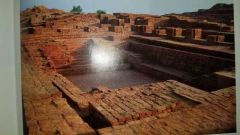
|
Mohenjo-daro, Great Bath
-South Asia
- 2600-1900 B.C.E.
-Ceremonial center of city
|
|
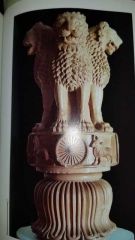
|
Lion Capital at Sarnath - South Asia -250 B.C.E. -Put up by Ashoka |
|
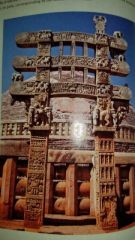
|
Great Stupa at Sanchi - South Asia -3 B.C.E. - 1 C.E. - Represents map of the Universe - Holds relics of the Buddha. |
|
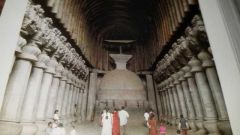
|
Chaitya Hall at Karle - South Asia -100 C.E. -Massive interior |
|
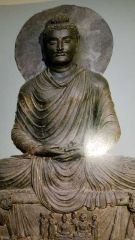
|
Gandhara Buddha - East Asia - 2 C.E. - Heavily influenced by Alexander the Great and Hellenistic Greek culture. |
|
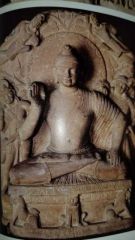
|
Mathura Buddha
- East Asia
- 2 C.E.
- Body of yaksha but wears a monk's robe. |
|
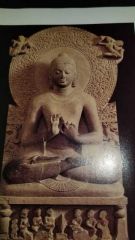
|
Sarnath Buddha - East Asia - 5 C.E. - Mixture of the Gandhara and Mathura. |
|

|
Shiva as Mahadeva at Elephanta - East Asia - 550-570 C.E. - Shiva (God of Stability) has both Male and Female faces. |
|
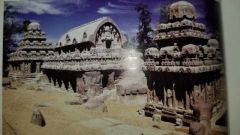
|
Mamallapuram, rock cut temples - East Asia - 2nd half 7 C.E.
- Carved from a single huge granite.
|
|
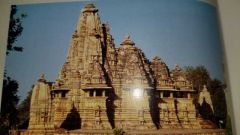
|
Vishvanatha Temple at Khajuraho - East Asia - 1000 C.E. - Sexual acts portrayed on the walls. |
|
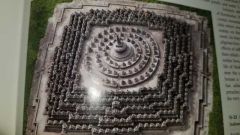
|
Great Stupa at Borobudur at Java - East Asia - 800 C.E. - For Worshipers. |
|
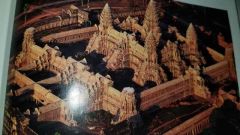
|
Angkor Wat at Cambodia - East Asia - 12 C.E. - One of the largest cities in the world at the time. |
|
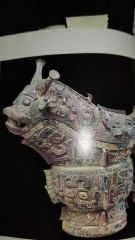
|
Shang Dynasty bronze vessel - China - 12 C.E. - Animals connected with the world of spirits. |
|
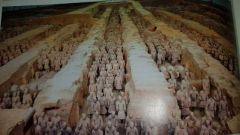
|
Army of the First Emperor of Qin - China - 210 B.C.E. - One of the largest archaeological discoveries ever made. |
|
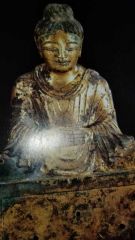
|
Buddha - China - 338 B.C.E. -Earliest datable chinese image of the Buddha. |
|
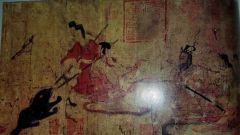
|
Lady Feng and the Bear by Gu Kaizhi - China - 4 C.E. - emphasize the importance of representing inner vitality and spirit. |
|
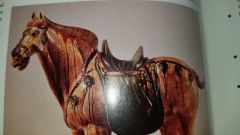
|
Tang Dynasty Horse - China - 9 C.E. - Colorful lead glazes. |
|
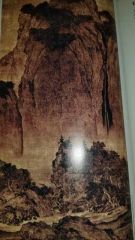
|
Travelers among mountains and streams by Fan Kuan - China - 11 C.E. - One of the first masters at recording light, shade, distance, and texture. |
|
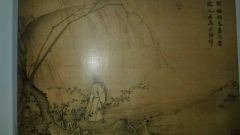
|
On a mountain path in spring by Ma Yuan - China - 13 C.E. - Contains the words of a poet. |
|

|
6th Chan Patriarch chopping bamboo by Liang Kai - China - 13 C.E. - Chopping blade propelled the patriarch to enlightenment. |
|
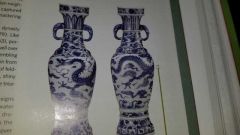
|
Yuan Dynasty temple Vase ( David Vases)
- China
- 1351 - Made of Porcelain.
- Symbols of Male and female energy. |
|
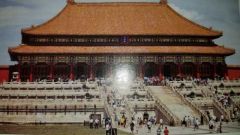
|
Forbidden City in Beijing - China - 15 C.E. - Where the emperor lived, separate from the people. |
|
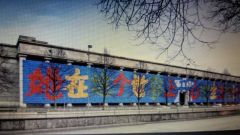
|
Remembering by AI Wei Wei - China - 2009 |
|
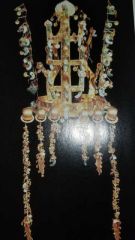
|
Crown from Silla Dynasty - Korea - 700-900 C.E. - Symbolizes life and supernatural power. |
|
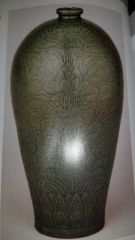
|
Maebyong Vase
- Korea
- 1000 C.E. - Highly translucent iron-pigmented glazes. |
|
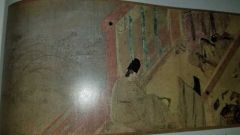
|
Tale of Genji by Lady Murasaki - Japan - 11 C.E. - Two-dimensionality |
|
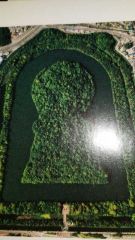
|
Tomb of Emperor Nintoku - Japan - Late 4th-5th Century - Largest Kofun tumulus. |
|
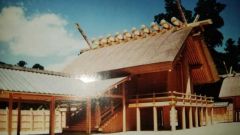
|
Ise Shrine - Japan - 5th Century, rebuilt in 1973 - House of the Goddess, Rebuilt every 25 years. |
|
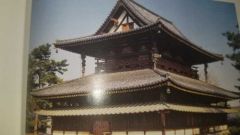
|
Horyuji Kondo in Nara (Golden Hall)
- Japan
- 680
- Buddhist monestary. |
|
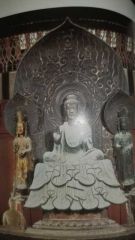
|
Shaka Triad by Tori Busshi
- Japan
- 623
- Buddhist sculpture. |
|
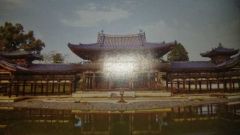
|
Phoenix Hall by Uji - Japan - 1053 - Single projecting roof. |
|
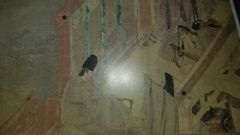
|
Genji Visits Murasaki, hand scroll - Japan - 12th Century - Flat color fields emphasize the paintings two dimensionality. |
|
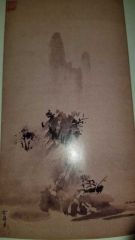
|
Sesshu Toyo, landscape - Japan - 1495 - Broad, rapid strokes. |
|
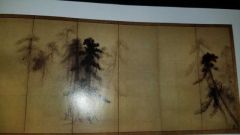
|
Pine Forest by Tohaku - Japan - Late 16th Century - Evokes a meditative mood. |
|
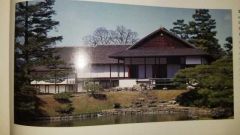
|
Katsura Imperial Villa, Kyoto - Japan - 17th Century - Became the standard for Japanese residential architecture. |
|
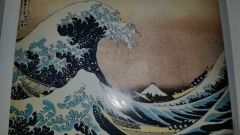
|
The Great Wave by Hokusai - Japan - 1826-1833 - Japanese graphic forms, Vibrant colors. |
|
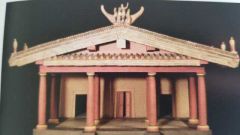
|
Model of Etruscan temple - Etruscan - 6 B.C.E. - Resembled Greek temples. |
|
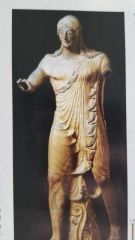
|
Apulu of Veii - Etruscan - 500 B.C.E. - Dedicated to Artemis |
|
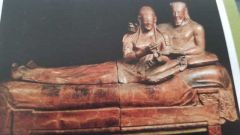
|
Sarcophagus of couple - Etruscan - 520 B.C.E. - Shows how women had a greater role in society. |
|
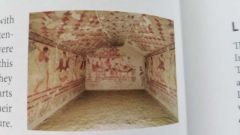
|
Tomb of Leapards in Tarquina - Etruscan - 480 B.C.E. - Two leapords on the painted wall |
|
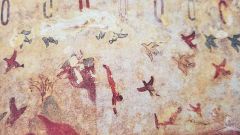
|
Tomb of Hunting and Fishing - Etruscan - 530 B.C.E. - Young men enjoying pleasures of nature. |
|

|
Capitoline Wolf - Etruscan - 500 B.C.E. - Romulus and Remus |
|

|
Sarcophagus of Lars Pulena - Etruscan - 2 B.C.E. - Life achievements on an open scroll. |
|
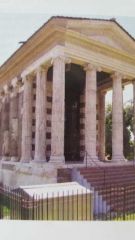
|
Temple of Portunus in Rome
- Roman Republic
- 75 B.C.E.
- God of harbors or ports |
|
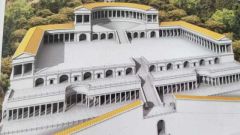
|
Sanctuary of Fortuna Primigenia in Palestrina
- Roman Republic
- 2 B.C.E.
- Influenced by Hellenistic Greece. |
|
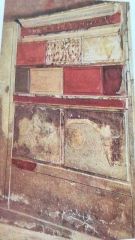
|
Samnite House in Herculaneum
- Roman Republic
- 2 B.C.E.
- Use of concrete. |
|
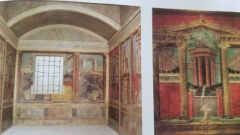
|
Cubiculum of Boscoreale
- Roman Republic
- 50 B.C.E.
- Convincing illusionism. |
|
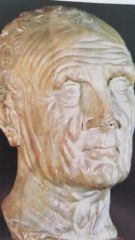
|
Head of an old man - Roman Republic - 50 B.C.E. - Very detailed face. |
|
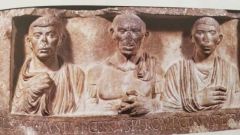
|
Funerary relief of Gessii - Roman Republic - 30 B.C.E. - Celebrates their freedom. |
|

|
Pompeii basilica - Roman Empire - 2 B.C.E. - Basilica was the law court. |
|
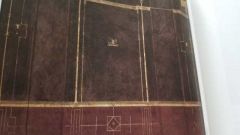
|
3rd Stlye painting in Boscotrecase - Roman Empire - 10 B.C.E. - Delicate linear fantasies. |
|
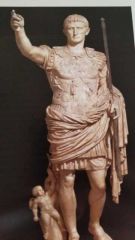
|
Augustus of Primaporta, Copy of a bronze original - Roman Empire - 20 B.C.E. - Commissioned the marble copy after his death. |
|
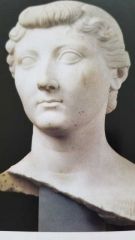
|
Bust of Livia - Roman Empire - 1 B.C.E. - 2nd wife because she had a kid. |
|
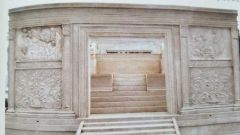
|
Arab Pacis Augustae - Roman Empire - 13 B.C.E. - Celebrates the establishment of peace. |
|
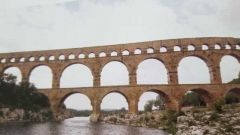
|
Pont du Gard in Nimes - Roman Empire - 16 B.C.E. - Water Chanel that still functions today. |
|
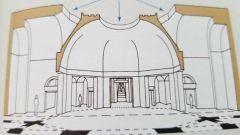
|
Severus and Celer, Domus Aurea - Roman Empire - 64 B.C.E. - Concrete Dome - |
|
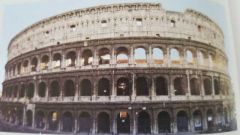
|
Colosseum - Roman Empire - 80 B.C.E. - Doric Tuscan Greek Collumns |
|
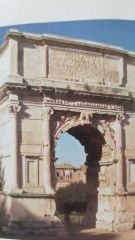
|
Arch of Titus - Roman Empire - 81 C.E. - Victories fill the spandrels of the passageway. |
|
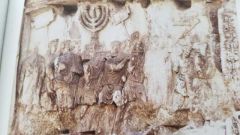
|
Spoils of Jerusalem - Roman Empire - 81 C.E. - Roman soldiers carry spoils taken from Jewish temple. |
|
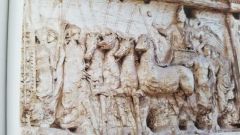
|
Triumph of Titus relief - Roman Empire - 81 C.E. - Honor and Valor. |
|
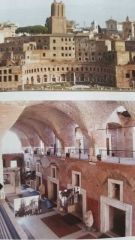
|
Apollodorus of Damascus, Forum of Trajan, Dedic - High Roman Empire - 112 B.C.E. - Reconstruction of forum, Basilica Ulpia, Column of Trajan, Market Hall. |
|
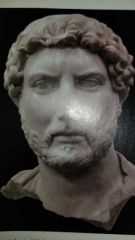
|
Portrait of Hadrian - High Roman Empire - 120 C.E. - First Roman Emperor with a beard. |
|
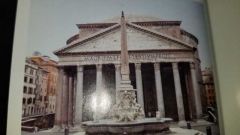
|
Pantheon - High Roman Empire - 125 C.E. - Symbolizes the orb of the earth and the vault of the heavens. |
|
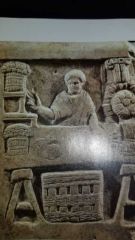
|
Funerary relief of vegetable seller - High Roman Empire - 2nd Century C.E. - Shows unrealistic proportions (Plebeian) |
|
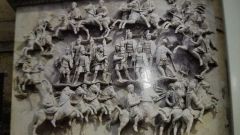
|
Decursio relief - High Roman Empire - 161 C.E. - 2 different styles on each side. |
|
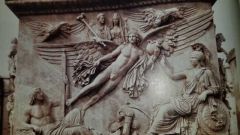
|
Apotheosis of Antonuis Pius and Faustina relief - High Roman Empire - 161 C.E. - 2 different styles on each side. |
|
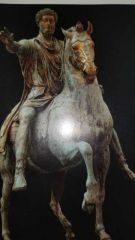
|
Equestrian statue of Marcus Aurelius - High Roman Empire - 175 C.E. - Popes thought it was Constantine so they didn't melt it down. |
|
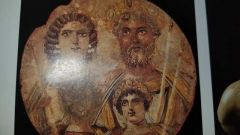
|
Painted portrait of Septimus Servus & family - Late Roman Empire - 200 C.E. - Only known painted portrait of an emperor shows Servus with grey hair. |
|

|
Caracalla - Late Roman Empire - 217 C.E. - Angry/Worried look |
|
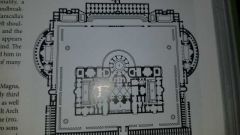
|
Baths of Caralla in Rome, Plan - Late Roman Empire Baths of Caralla in Rome, Plan- Late Roman Empire - 216 C.E.- Resembles modern health spa. Baths of Caralla in Rome, Plan- Late Roman Empire - 216 C.E.- Resembles modern health spa. - 216 C.E. - Resembles modern health spa. |
|

|
Ludovosi Sarcophagus - Late Roman Empire - 250 B.C.E. - Emblamatic of the chaos in the Roman Empire |
|
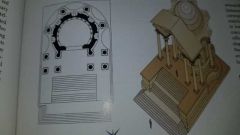
|
Temple of Venus in Baalbek - Late Roman Empire - 3rd Century C.E. - "Boroque" style. |
|
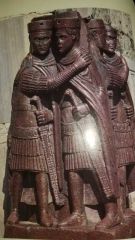
|
Tetrachs - Late Roman Empire - 305 C.E. - 4 co-rulers |
|
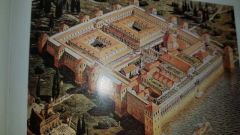
|
Diocletian palace at Split - Late Roman Empire - 300 C.E. - Fortified Roman city. |
|
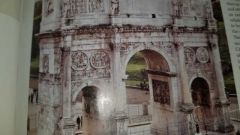
|
Arch of Constantine in Rome - Late Roman Empire - 330 C.E. - Heads of the earlier Roman Emperors. |
|
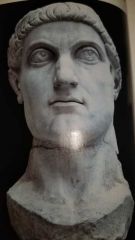
|
Head of Constantine in Rome - Late Roman Empire - 330 C.E. - Youthful ruler |
|
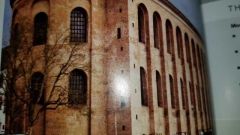
|
Aula Palatina in Trier - Late Roman Empire - 4th Century C.E. - Brick exterior |

